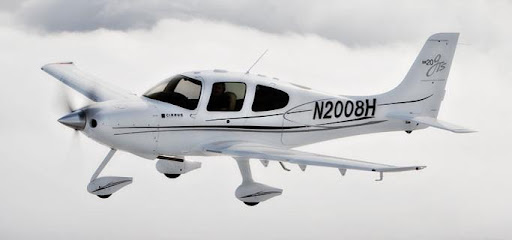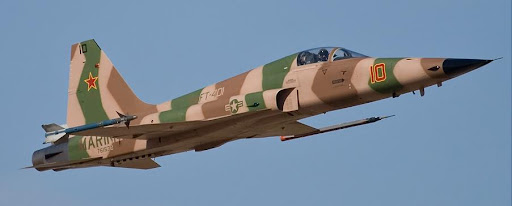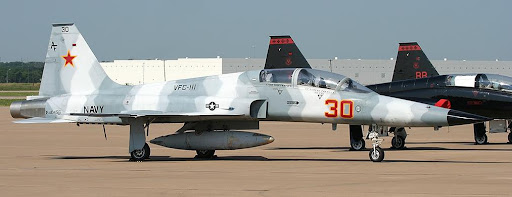I've bitched from time to time on this blog about some catastrophically wasteful and overpriced aircraft programs. It's therefore only fair that I should give credit where credit is due - and Naval Air Systems Command seems to have come up trumps with a recent program.
The Navy's 'aggressor squadrons' act as enemies, opposing regular Navy squadrons for training purposes, teaching them likely enemy tactics and allowing them to sharpen their combat skills before having to use them the hard way. They'd been using Northrop F-5E Tiger II fighter aircraft, but due to their very heavy and demanding schedule, the majority of these aircraft were approaching the end of their airframe life (expressed in thousands of flying hours).
To replace them with new aircraft would have been extremely expensive. The cheapest supersonic fighter available in the US today is the Lockheed Martin F-16 Fighting Falcon, which in its latest versions costs well over $40 million per copy. Taking older aircraft (such as early versions of the F-16) out of the Boneyard and refurbishing them would have been cheaper, but still very expensive, and in addition would have required a completely new inventory of spares, maintenance tools, etc., as well as re-training all the pilots and technicians involved.
The Navy came up with an ingenious solution. The Swiss Air Force had purchased over a hundred F-5E/F Tiger II's in the 1970's, but had stored a number of them due to restrictions on the number of available pilots. 32 were available, with very low airframe hours. NAVAIR managed to buy them for a reported average of about $530,000 apiece, which is an absolute steal! To give you an idea of what a ridiculously low price this is, consider an entry-level light aircraft like the Cirrus SR20, which has a base price of $269,900:

or the Cessna 172 Skyhawk, with a base price of $297,000:
These are entry-level, stock-standard, four-seat piston-engine light aircraft. NAVAIR has obtained highly capable, almost-new, twin-engined supersonic jet fighters, and paid less for each of them than for two such light aircraft! That's a phenomenal bargain in anyone's language.
The beauty of this purchase is that as high-hour Navy F-5E's are retired, their electronics and other vital components are simply transferred to the newer Swiss airframes. Additional upgrades and modifications are also performed, producing an updated version called the F-5N. Less-worn-out Navy F-5E's are also being upgraded to this standard, which includes new avionics. When the program is complete, it's believed up to 44 F-5N's (with a few two-seat F-5F's, also remanufactured to the new standard) will be in service with the US Navy and US Marine Corps aggressor squadrons. They're expected to remain in service until at least 2015.
Here's a newly-remanufactured F-5N in US Marine Corps 'aggressor' colors:

and a newly-remanufactured F-5F in US Navy 'aggressor' colors:

If you'd like to know what it's like to fly F-5N's with the aggressor squadrons, Flug Revue did an article about it in 2007. It makes interesting reading. Here's a video clip (several years old) of F-5E's acting as aggressor aircraft in training with USAF F-15 Eagle fighters.
Congratulations to NAVAIR on a very cost-effective and economical solution to an operational need. They've even kept their existing spares and maintenance inventory, and haven't had to re-train pilots and ground crew. All in all, a very wise use of our taxpayer dollars!
Now, about that bloated F-35 program . . . hey, NAVAIR, got any good ideas for cost-effective solutions there?
Peter
1 comment:
The US Air Force management seems incapable of understanding the recent advances in UAVs will lead to a new generation of air-superiority fighter in the very near future.
By taking the pilot (and his big ass ego) out of the airframe, the designer will have a "Clean Slate" to achieve at least an order of magnitude better performance in Climb speed, turn rate, loiter time, G tolerance, payload and fuel consumption.
Israel, or Germany or Fwance or Russia WILL make a UAV that will outperform a F35.
Those expensive (therefore produced in small quantity) F35s are going to be facing swarms of more capable UAVs that cost 10% as much to produce.
Tell me my crystal ball is faulty.
Post a Comment